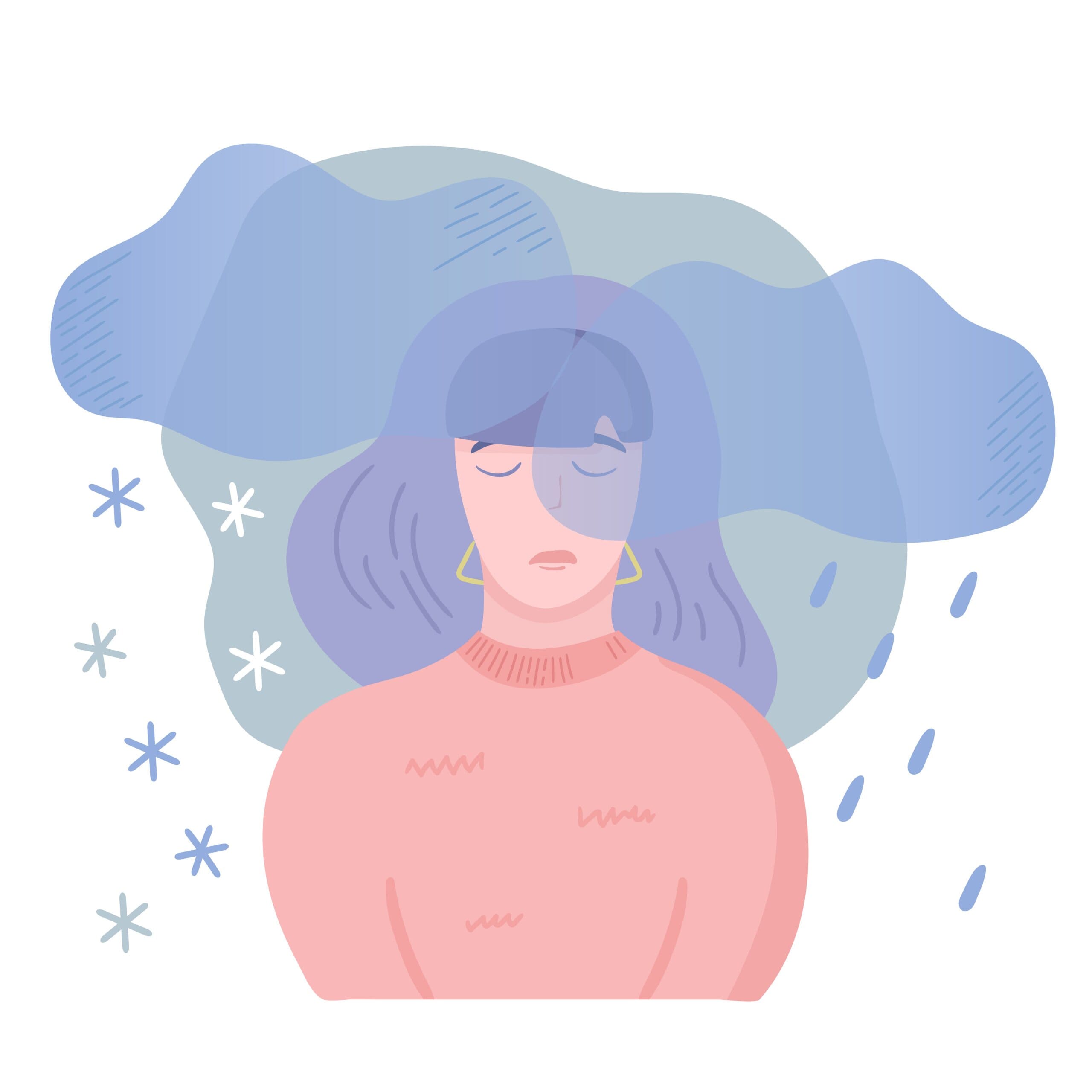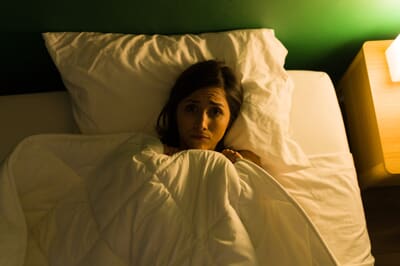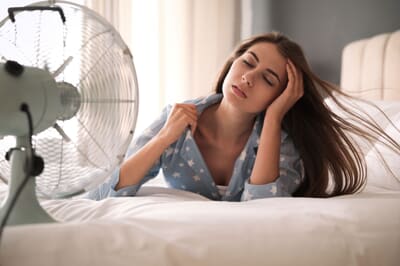With summer and autumn finally passing and winter on the horizon, we all know the days are only going to get colder, darker, and shorter over the next few months. And with said darkness descending on us as we commute to and from work, we wouldn’t blame you if you started daydreaming about cheerier and brighter weather.
But is this longing for fresh sunshine during such gloomy morning hours merely something we all do (and let’s face it, it almost certainly is), or is there something else at play that might be affecting our mood?
Well, if you find that you often feel more lethargic, extra tired, and generally, well… sad, over winter, then you might be one of the few people who suffer from SAD over the colder months of the year.
But what exactly is SAD, and how does it impact your mood and sleep? And what can you do to minimise the symptoms and properly enjoy your start to the new year? Why not take a look at our guide on how to deal with SAD below for all this info and more?
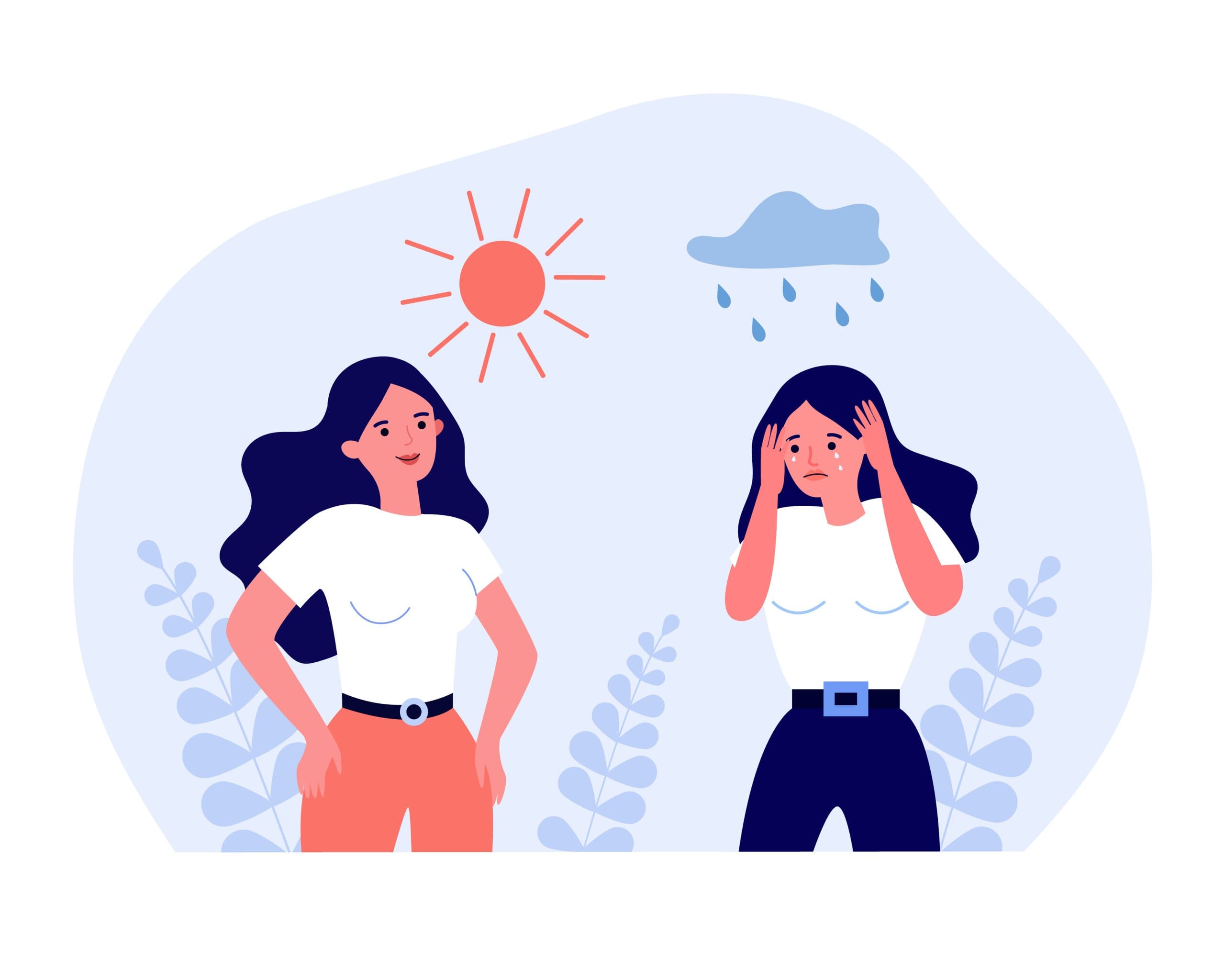
What does SAD stand for?
Standing for seasonal affective disorder, SAD is a common type of mild depression that tends to affect people over the winter (hence its other name; winter depression), before ebbing away in spring and the summer months.
SAD itself is thought to be closely linked to the reduced levels of sunlight experienced through December, January, and February. However, there’s a little more to it than this, and it’s actually possible to experience SAD in the summer – though this is thankfully quite rare.
What is seasonal affective disorder caused by?
Sadly, although links have been made between the onset of winter and a rise in seasonal affective disorder, the true causes of SAD are not fully understood. But, with that being said, there are at least a few theories as to why it’s more common when the sun takes a step back towards the end of the year:
- Higher melatonin levels – a crucial hormone when it comes to sleep regulation, studies suggest that some people’s bodies might produce higher levels of melatonin during the winter, leading to oversleeping and general lethargy during the day.
- Lower serotonin levels – in contrast to melatonin levels, further studies also hint that SAD may also be partially caused by lower serotonin levels, which can increase anxiety, depression, and disrupt sleep.
- Genetics – although scientists are not sure of the extent to which genetics may play a role, it is thought that certain genes may make you more likely to experience seasonal affective disorder.
In other words, SAD seems to be the result of hormonal disruption and is therefore more likely to impact those who are sensitive or vulnerable to such changes happening in their body’s natural rhythm.
What is the relationship between seasonal affective disorder and sleep quality?
While not always the case, SAD has been shown to sometimes directly impact the sleep quality of those suffering it by messing with the body’s circadian rhythm. As a result, those who experience SAD may find that they’re getting far more or far less sleep than usual, which will likely only exacerbate the intensity of their other symptoms.
Common seasonal affective disorder symptoms
So, now that you know what SAD is, and what may be causing it, what are the key symptoms to note if you suspect you might be experiencing SAD this winter? We’ve outlined the most common seasonal affective disorder symptoms to watch out for:
- Persistent low mood
- Irritability and grumpiness
- Anxiety
- Depressive spells
- Lethargy
- Sleepiness in the day
- Craving high-carb foods
- Poor concentration
- Lower libido
Now, obviously, experiencing one or more of these symptoms is no guarantee that you do suffer from SAD. But if you find that you’re experiencing several of them together, then it’s best to go and speak to your GP about potentially getting a diagnosis.
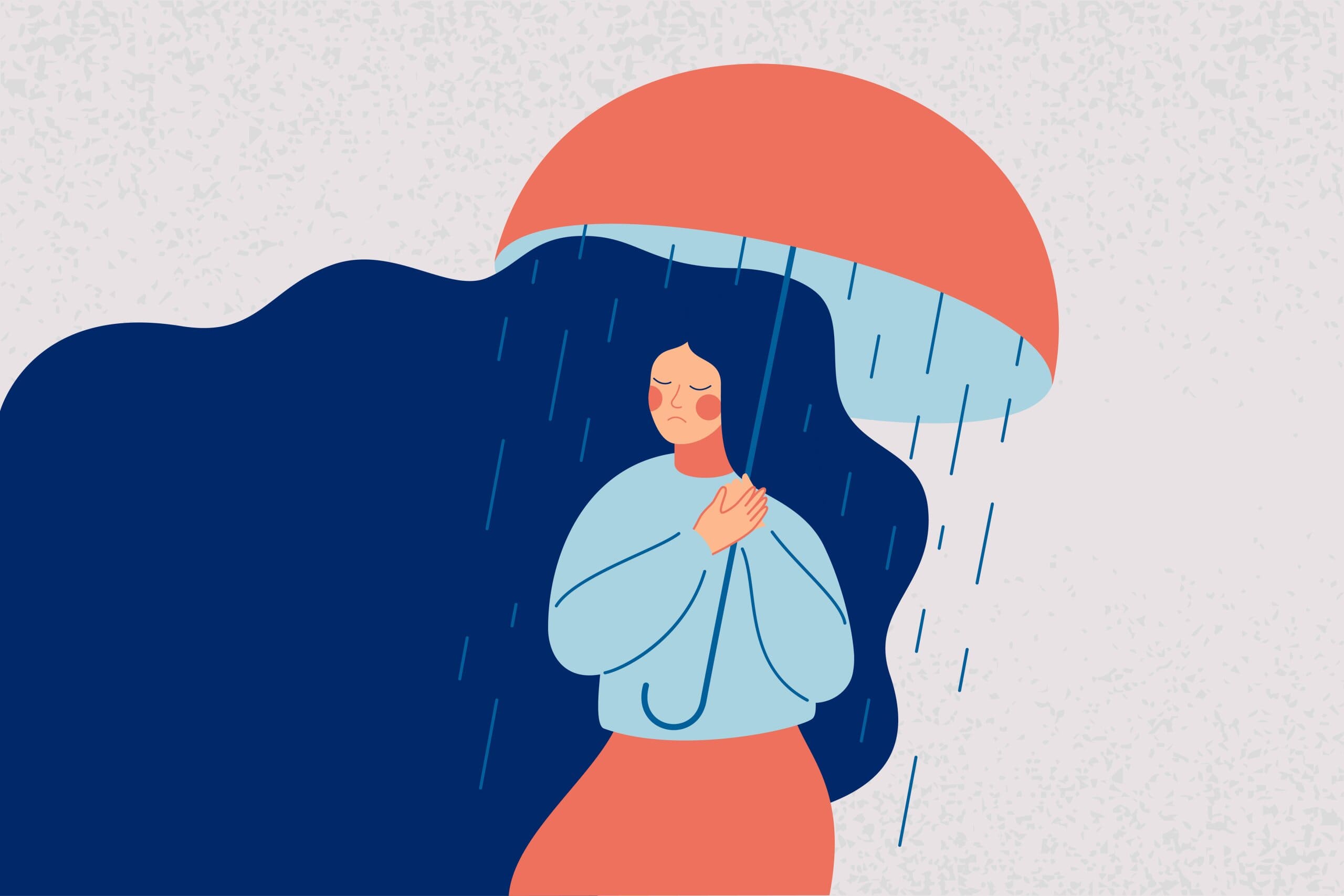
Top tips to deal with Seasonal Affective Disorder
Getting through the winter months can be a struggle at the best of times, especially once Christmas is over. January and February seem to stretch out for months on end, and if you’re dealing with SAD, it can feel that much more of a slog.
Fortunately, there are ways to help manage the symptoms of SAD, the most helpful of which we’ve shared below:
1. Get some red-light therapy
Investing in a red light therapy box is one of the best ways to help reduce symptoms of SAD. By mimicking sunlight, light therapy can help promote proper hormone balance, alleviating lethargy and aiding in sleep by regulating your body’s internal clock.
Being around 10 times stronger than the sort of light you tend to find in homes and offices, you only need to sit with a red light on for a couple of hours each day at most, so you can set them up while you work from home and experience all the benefits while getting on with your day!
2. Don’t neglect the exercise
We all know how good exercise is for our physical health, but did you know that exercise can naturally boost your mood as well? This is because exercise helps to release endorphins into your bloodstream, which then get pumped around your body, leaving you with that feel-good mood once you’ve finished a workout.
So, even if it’s just a regular walk or a quick run at lunchtime, getting your blood pumping at some point during the day can certainly help to alleviate your SAD symptoms.
3. Eat healthily
Given all the tempting chocolates and good food eaten over the winter months, it can be all too easy to reach for the sugary snacks and stock up on carbs as a little treat to boost our mood. But while this is fine in moderation, too much snacking can lead you to feeling lethargic and sluggish.
Instead, avoiding these snacks and eating a balanced diet of carbs, protein, and plenty of fruit and vegetables will leave you with much more energy and help to give your mood a much-needed boost.
4. Take vitamin D
An essential vitamin for our bodies, sunlight is one of our core sources of vitamin D, and plenty of us might experience a slight deficiency of it while sun levels drop over the winter months.
Thankfully, we can all avoid the lethargic effects of this by taking regular supplements. These will bring our vitamin D levels back up to normal and can help give an energy boost to anyone suffering from SAD.
5. Go outside
Those dark mornings and evenings when you’re commuting to and from work are certainly not the most appealing prospects for a walk, which is why getting outside during the day is essential for those living with the effects of SAD.
Dark weather such as this can leave us drained of energy, but going for a walk during your lunch break or even sitting by a window while you work with some natural light can do wonders for elevating your mood.
6. Get out and socialise
Although we might not want to leave the house once we get back in from work, taking the time to go out and see friends is a great way to break up the low mood and feelings of isolation that SAD can cause.
This could be as simple as sticking to a social hobby you do weekly, or it could mean setting up a call with friends too far away to see in the evenings, whatever you can do to get in touch and chat with those closest to you.
7. Stick to your routine
Finally, sticking to a regular daytime and bedtime routine is one of the best ways to offset the symptoms of SAD, especially if you create one that involves all of the above. Doing so can help provide you with a sense of control and stability, which can further alleviate the symptoms of SAD.
And, if you have the time, why not consider indulging in some self-care before bed? Whether through meditation or reading a good book, finding a way to encourage a regular sleeping pattern will do wonders for your quality of sleep and make getting out of bed on those cold winter mornings even easier!

How prominent is SAD in the US?
As part of our research into the impact of SAD, we carried out a study across all 50 American states in 2023 to see which had the worst rates of seasonal affective disorder. Here is what our study uncovered:
1. Alaska
It’s official: Alaska is the state that suffers from Seasonal Affective Disorder the most – and it’s easy to see why!
Considering that it not only has the coldest temperatures (dipping to -2.9 degrees Celsius on average over the winter months), but the least sun, at 35% - or just 358 hours over the winter period – Alaskans are living in a prime location for SAD symptoms to blossom.
Not only that, but Alaska suffers from the highest relative humidity in the afternoon over fall, as well as the joint second least clear days, at just 15. This means people are more likely to stay inside, rather than getting that much-needed daily dose of sunshine.
2. New York
In second place is New York. This state sees the second least amount of sun, at just 42% - or 414 hours over the winter months – as well as just 15 clear days on average, which is the joint second-lowest score on our list.
Pair that together with the fact that it has the third highest average relative humidity during the afternoons of autumn (63%), and you can see why its population is avoiding going outdoors when it’s colder and gloomier.
3. Washington
With just 14 clear days on average over autumn and winter, Washington has the least number of clear days on our list. Not only that, but it has the second highest humidity levels in the afternoon, at 66%; and the joint fourth least sun at just 44%, or 437 hours over the total period of fall and winter.
4. Vermont
Heading back to the East Coast, Vermont comes in fourth place for the states that suffer most from SAD. Temperatures during the winter hit a chilly 7.6 degrees Celsius on our list – the eighth lowest – and if that’s not enough to put people off from going outside, then the fact that the state only sees 15 clear days throughout winter, as well as just 451 hours of sunshine in total, will keep people staying inside.
5. Michigan
Rounding off our list of the states that are most likely to suffer from SAD is Michigan. This state only sees 474 hours of sunshine over the colder months (the sixth least on our list), as well as only getting 19 clear days on average, and the sixth-highest humidity levels in the afternoon. Not exactly conditions that make you want to spend any length of time outside!
Methodology
We collected weather data for every state in the US, and then created an index to uncover the states that are most likely to suffer from SAD this winter.
Improve your sleep comfort with MattressNextDay
While we can’t yet prevent SAD from making winter just that little bit more dreary, it’s certainly possible to offset its symptoms and enjoy the darkest months of the year – even if that means we have to sit inside with our curtains drawn and a mug of hot chocolate in our hands rather than sunbathing on a beach.
Of course, if you’ve found your sleep is being disrupted even after winter has passed, then it might be time to upgrade your bedroom with a new mattress or bed frame. No matter your firmness preferences or desired bed size, we’ve something to suit everything in our collection.
Get in touch today to find out more about our next-day delivery service, and if you want more sleep tips, such as how to sleep with a cough and understanding the benefits of a good night’s sleep, then you can head on over to our sleep blog directly!
